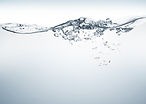Understanding pH Crashes in Ponds and How to Prevent Fish Loss
- Richard Fulford
- Oct 31, 2024
- 2 min read
Maintaining good water quality is very important for a healthy pond ecosystem. This is especially true when you have ornamental fish in your pond. Recently, FishLife Pond Services had a client who was experiencing unexplained losses of their fish. After we conducted a thorough water test, we identified the problem they were facing.
It was a pH crash caused by low Carbonate Hardness (KH-buffering capacity). This situation led to water that was too acidic, making it unsuitable for the fish. This case study shows how important it is to keep water chemistry balanced. It also highlights how proactive measures can protect your pond.
Case Study: Diagnosing Fish Loss Due to Acidosis
The client's pond had dangerously low pH levels (around 6) and very low KH (one degree Carbonate Hardness). The low KH meant the water had minimal buffering capacity, leaving it vulnerable to pH crashes, especially since the client was topping up with rainwater. Rainwater, while free from algae-fueling nutrients, is naturally soft and acidic. Over time, this caused a pH crash, leading to “acidosis,” a condition where the water becomes so acidic it harms fish health.
Challenges Discovered:
Low pH and KH: These were causing water instability and harmful acidity.
Filter Bacteria Death: Acidic conditions wiped out beneficial bacteria, leading to an ammonia spike, which is toxic to fish.
Our Solution: Restoring Water Stability
To stabilise the pond’s chemistry and prevent further fish loss, we followed these steps:
Water Change: A significant amount of water was replaced in order to reduce the level of pollutants.
Using OptiPond for Buffering: We administered Oase AquaActiv OptiPond to raise the KH and buffer the water, ensuring the pH remained stable around 7.5-8.0, ideal for ornamental fish.
Ammonia Management: Interpet Ammonia Remover was applied to lock away harmful ammonia.
Rebuilding Beneficial Bacteria: We turned off the UV clarifier temporarily and added Oase BioKick Premium to replenish filter bacteria.
After a week, the water stabilised, with the pH at 7.8 and a consistent KH level. The client can continue using rainwater but now understands the importance of monthly OptiPond dosing to prevent acidification.

Key Takeaways for Pond Owners
Regular Water Testing: Check pH and KH regularly, especially if using rainwater.
Buffering with OptiPond: Raise KH levels periodically to prevent acidification.
Monitor Ammonia Levels: Keep a close watch on ammonia, especially if pH fluctuates, as filter bacteria are sensitive to low pH.
Conclusion
A balanced pond ecosystem relies on stable water chemistry. This case demonstrates how a small oversight, like not monitoring KH, can lead to major issues, including fish loss.
At FishLife Pond Services, we help clients maintain optimal water conditions for thriving ponds. Contact us if you need assistance with pond maintenance or water testing to keep your pond healthy all year round.



Comments